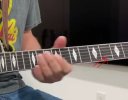mr_fender
Axe-Master
The majority of electric guitarists don't use wound thirds, maybe not 1% but really? Even a lot of heavy gauge sets use a plain 3rd these days.
This. A wound G string on a modern electric guitar is pretty rare these days. Much more common on Acoustic guitars or flatwounds. Unwound/Plain G has been the standard for electric sets for well over 30 years.

